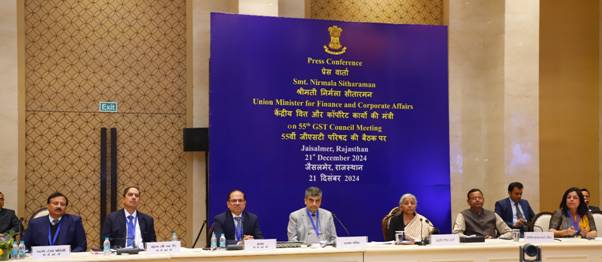In an effort to curb tax evasion, promote transparency, and encourage digital transactions, tax laws in many jurisdictions often impose restrictions or disallowances on cash expenses or set limits on cash transactions. These regulations aim to track financial transactions more effectively, reduce the prevalence of unreported income, and promote a formal economy. Let’s delve into the concept of disallowance of cash expenses and the imposition of limits on cash transactions.
Disallowance of Cash Expenses:
- Purpose: Tax authorities disallow certain cash expenses to discourage the use of unaccounted funds and ensure accurate reporting of income. Disallowed expenses are not deductible when calculating taxable income.
- Types of Expenses Disallowed:
- Specific Expenses: Certain expenses are explicitly disallowed by tax laws irrespective of the mode of payment. For example, fines and penalties for legal violations are often non-deductible.
- General Expenses: Tax authorities may impose restrictions on cash payments above a certain threshold for general expenses like business expenditures, travel, entertainment, etc.
- Thresholds and Regulations: Tax laws often set thresholds beyond which cash expenses are disallowed or subject to additional scrutiny. These thresholds vary depending on the jurisdiction and the nature of the expense.
- Documentation Requirements: Taxpayers must maintain proper documentation and evidence for all expenses claimed, regardless of the payment method. Failure to provide adequate documentation may result in the disallowance of expenses during tax audits.
- Penalties and Consequences: Taxpayers found to have claimed disallowed cash expenses may face penalties, fines, and interest charges. Moreover, such discrepancies can trigger tax audits and investigations, leading to legal repercussions.
Limit on Cash Transactions:
- Objective: Governments may impose limits on cash transactions to promote digital payments, combat money laundering, and monitor high-value transactions more closely. These limits are intended to reduce the circulation of black money and enhance transparency in the economy.
- Types of Transactions Covered:
- Business Transactions: Limits on cash transactions typically apply to business dealings, including sales, purchases, and payments for goods and services.
- Financial Transactions: High-value financial transactions such as loans, deposits, investments, and withdrawals may also be subject to cash transaction limits.
- Thresholds and Regulations: Governments establish thresholds beyond which cash transactions are prohibited or require additional reporting. These thresholds vary widely across jurisdictions and are periodically reviewed and updated.
- Exemptions and Exceptions: Certain transactions may be exempted from cash transaction limits, such as transactions involving government entities, financial institutions, or specific industries. However, such exemptions are usually limited and subject to strict conditions.
- Enforcement and Compliance: Tax authorities and regulatory agencies enforce cash transaction limits through monitoring, reporting requirements, and penalties for non-compliance. Businesses and individuals are required to maintain accurate records and report transactions exceeding the prescribed limits.
- Promotion of Digital Payments: Limiting cash transactions encourages the adoption of electronic payment methods, including credit/debit cards, bank transfers, mobile wallets, and digital payment platforms. This shift towards digital payments enhances financial inclusion, efficiency, and accountability in the economy.
Let’s know the Income Tax Provisions in brief:
Provisions of Section 269T: Mode of repayment of certain loans or deposits.
This section restricts a person from repayment of any loan, deposit, or any specified advance received by it otherwise than by an account payee cheque or account payee bank draft (drawn in the name of the person who made the loan, deposit or specified advance) or by use of electronic clearing system through a bank account or other electronic modes prescribed under Rule 6ABBA.
Transactions Covered under Section 269T
Repayment in respect of the following transactions is covered under this provision:
- Any loan or deposit of money which is repayable after notice or repayable after a period and in case of a person other than company it includes loan or deposit of any nature; or
- Any sum of money in the nature of advance in relation to the transfer of immovable property, whether or not the transfer takes place.
Threshold Limit for Section 269T
This provision shall be attracted if the value of the covered transaction exceeds the following limit:
- The amount of such loan or deposit or specified advance together with interest payable thereon is Rs. 20,000 or more;
- The aggregate amount of the loans or deposits held either in own name or jointly with any other person on the date of such repayment, together with interest payable on such loans or deposits, is Rs. 20,000 or more; or
- The aggregate amount of the specified advances received by such person either in his own name or jointly with any other person on the date of such repayment together with interest payable on such specified advances, is Rs. 20,000 or more.
However, if a deposit is paid by a Primary Agricultural Credit Society (PACS) or a Primary Co-Operative Agricultural and Rural Development Bank (PCARD) to its member or a loan is repaid to a PACS or a PCARD by its member, the threshold of Rs. 20,000 shall be enhanced to Rs. 2 lakhs.
Exceptions to Section 269T
There is no restriction on repayment of any loan or deposit or specified advance taken or accepted from any of the following:
- Government;
- Any banking company, post office saving bank, or co-operative bank;
- Any corporation established by a Central, State, or Provincial Act;
- Any government company defined under section 2(45) of the Companies Act, 2013; or
- Any other notified institutions, associations, or body, or class of institutions, associations, or bodies.
Penalty for Contravention of Section 269T
Where a person fails to provide the facility for accepting payment through prescribed electronic modes as required under this provision, he shall be liable for a penalty under Section 271DB of Rs. 5,000 for every day during which such failure continues.
Prescribed Electronic Modes for Various Sections
Prescribed electronic modes include:
- Credit Card;
- Debit Card;
- Net Banking;
- IMPS (Immediate Payment Service);
- UPI (Unified Payment Interface);
- RTGS (Real Time Gross Settlement);
- NEFT (National Electronic Funds Transfer); and
- BHIM (Bharat Interface for Money) Aadhaar Pay.
Provision of Section 40A(3): Expenses or payments not deductible in certain circumstances
If the payment (or aggregate of payments) for an expenditure to a person in a day exceeds Rs. 10,000 and it is made by any mode other than account payee cheque or bank draft or electronic clearing system through a bank account or electronic modes prescribed in Rule 6ABBA, no deduction shall be allowed for such expenditure.
Limit for Payment made for Plying, Hiring, or Leasing Goods Carriages
Where payment is made for plying, hiring, or leasing goods carriages, the ceiling of Rs. 35,000 shall be considered instead of Rs. 10,000.
Non-Specified Mode Payments to Banks
Payments made in a non-specified mode (i.e., cash, crossed cheque, bearer cheque, etc.) to certain institutions like RBI or any banking company are not covered in this provision.
Disallowance for Payment made by Book Adjustment
No disallowance shall be made where the payment is made by way of adjustment against the amount of any liability incurred by the payee for any goods supplied or services rendered by the assessee to such payee.
Provisions of Section 269SS: REQUIREMENT AS TO MODE OF ACCEPTANCE, PAYMENT OR REPAYMENT IN CERTAIN CASES TO COUNTERACT EVASION OF TAX
Section 269SS restricts a person from taking or accepting any loan or deposit or any specified sum from any other person otherwise than by an account payee cheque or account payee bank draft or use of electronic clearing system through a bank account or other electronic mode prescribed in Rule 6ABBA.
Agricultural Income Exception for Section 269SS
Section 269SS shall not apply if both recipient and depositor have an agriculture income and neither of them has any income chargeable to tax.
Transactions Covered in Section 269SS
The following transactions are covered under this provision:
- Any loan or deposit of money; or
- Any sum of money receivable by way of advance or otherwise in relation to the transfer of immovable property, whether or not the transfer takes place.
Threshold Limit for Section 269SS
This provision shall be attracted if:
- The amount (or aggregate) of such loan or deposit or specified sum from a depositor is Rs. 20,000 or more; or
- On the date of taking or accepting such loan or deposit or specified sum, the amount (or the aggregate) of any loan or deposit or specified sum taken or accepted earlier from the depositor remaining unpaid is Rs. 20,000 or more; or
- The aggregate of the sum referred to in points (a) and (b) above is Rs. 20,000 or more.
Exceptions to Section 269SS
There is no restriction to take or accept any loan or deposit or specified sum in the impermissible mode from or by certain entities like Government, banking companies, etc.
Penalty for Contravention of Section 269SS
Where a person takes or accepts any loan or deposit (or specified sum) in cash or in a mode which is in contravention of Section 269SS, he shall be liable for a penalty under Section 271D of a sum equal to the amount of the loan or deposit (or specified sum) so taken or accepted.
Provisions of Section 269ST: Mode of undertaking transactions
Section 269ST restricts a person from receiving an amount of Rs. 2 lakhs or more otherwise than by an account payee cheque or account payee bank draft or use of an electronic clearing system through a bank account or other electronic modes prescribed in Rule 6ABBA.
Transactions Covered in Section 269ST
This provision imposes restrictions in respect of the receipts of Rs. 2 lakhs or more:
- In aggregate, from a person in a day; or
- In respect of a single transaction; or
- In respect of a transaction relating to one event or occasion from a person.
Exceptions to Section 269ST
This provision shall not apply to the receipt by certain entities like Government, banking companies, etc.
Penalty for Contravention of Section 269ST
Where a person receives the amount in contravention of this provision, he shall be liable for a penalty under Section 271DA of a sum equal to the amount of such receipts.
Provision of Section 269SU: Acceptance of payment through prescribed electronic modes
Section 269SU provides that where a person is carrying on a business and his total sales, turnover, or gross receipts during the immediately preceding previous year exceeds Rs. 50 crores, it shall be mandatory for him to provide a facility to accept the payment through certain electronic modes.
Exceptions to Section 269SU
The provision of this section shall not apply to a person having only B2B transactions (i.e., no transaction with retail customer/consumer) subject to the condition that at least 95% of the aggregate of all amounts received during the previous year, including the amount received for sales, turnover or gross receipts, is by any mode other than cash
Visit www.cagurujiclasses.com for practical courses











